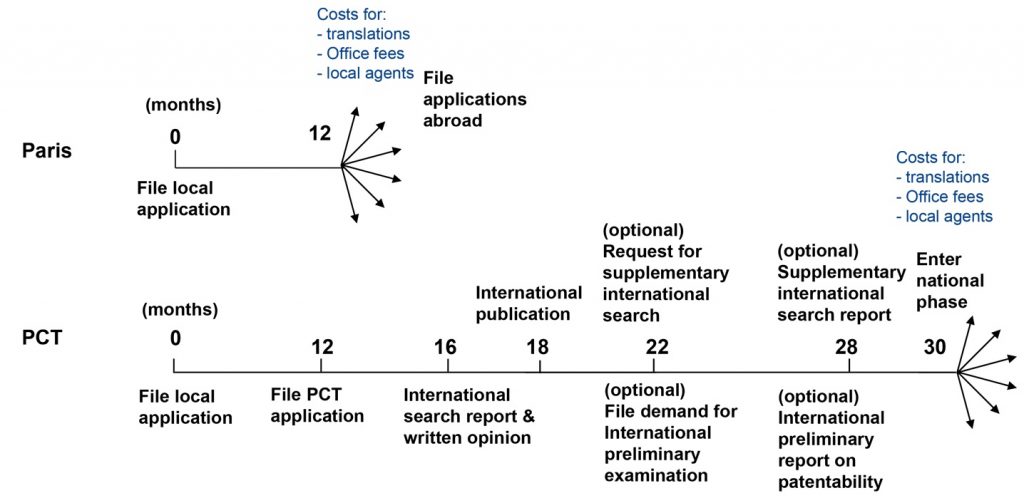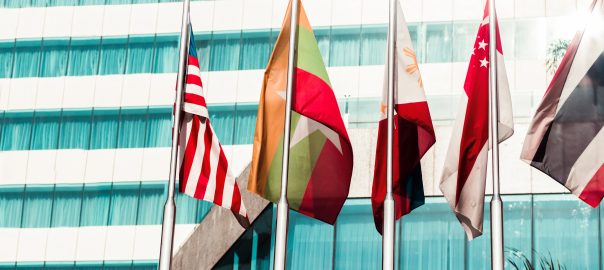International patent protection has been gaining popularity over the years. Now more than ever, intangible assets such as patents have never been more important. As businesses continue to expand their market reach, patent protection has been one of the most important assets that jump-start their success abroad.
It is worth noting, however, that the journey of obtaining patents abroad can be costly. There is also no such thing as an international patent that you can use or enforce in other countries. But, there are several ways to obtain international patent protection.
Direct Filing
The direct route of obtaining an international patent is recommended for applicants with a tight budget. It is best for those who are interested in obtaining patents for only a limited number of countries.
The direct or Paris route allows applicants to file their initial application in their home country. Afterward, they have a 12-month period wherein they can file a patent application abroad. The countries where they filed the application would be the one to determine whether they are eligible for patent protection.
For instance, a US applicant wants to obtain a patent in his only two niche countries. Using the direct route, he would have to file a patent application to the United States Patent and Trademark Office (USPTO) first. Upon application, he then only has a 12-month period to file the application for the two countries where he wants to market his invention.
Patent Cooperation Treaty
The Patent Cooperation Treaty (PCT) facilitates the applicant’s international patent application. It streamlines the initial filing process by buying the applicants enough time (up to 30 months) to file for a national phase entry. National phase entry is when an applicant files an application to the country where they want to obtain the patent.
Note that the PCT does not examine an application fully and it does not necessarily grant patents to applicants. Rather, it is one of the routes to take when obtaining patents abroad. In essence, PCT grants an applicant enough time to further develop the patent and examine countries where it would be most suitable to obtain patent protection.
Since there is no such thing as an international patent, the PCT made it possible for an applicant to file one international application in one language and one location. This route is best suited for applicants who are interested in obtaining patents for numerous countries.
To further illustrate, let us take a US pharmaceutical company as an example. The company wants to obtain a patent in 12 countries. They already filed a patent application with the USPTO, but they are still not certain whether obtaining a patent for these 12 countries would be enough or, even, worth the cost. With the PCT route, they have enough time (30 months) to further observe the market behavior of a country, as well as further, develop the invention they want to patent. When they finally decide that they want to obtain protection in these countries, they can then easily proceed with the national phase entry and file applications for each country.
The World Intellectual Property Organization summed up the process of obtaining patent protection abroad in the illustration below.

Cost and benefits of obtaining a patent abroad
Having discussed the two different routes, applicants still need to take several factors into consideration before starting their international patent application journey.
1. Cost
As mentioned above, obtaining a patent abroad can be costly. Since the patent process is associated with several fees (e.g filing fees, translation costs, attorneys fee, maintenance fees, and so on), applicants need to carefully assess their budget and resources.
2. Enforceability
When obtaining protection abroad, applicants must evaluate whether the country’s patent system is reliable.
3. Eligibility
Different countries have different patent laws. For instance, software or living organisms are not patentable in other countries as compared to the United States. It is important to have a basic understanding of the patent laws of different countries before filing an international patent protection.
4. Longevity
Is the invention worth the patent protection? Or will it just be overshadowed by another product in the next 3-4 years? It is crucial to also conduct a market study and weigh its benefits before proceeding to file an application.
5. Competition
If an invention is most likely the target of infringers, then it might be a good indicator to obtain protection for that specific country.
Overall, it is worth noting that the information set above is merely an overview of the international patent application process. It is still highly advisable to consult and ask for assistance from a qualified patent attorney. They would be able to provide a more strategic approach as well as give more details about the patent application process. With the help of a patent attorney, it would be much easier to navigate through the market of different countries.


